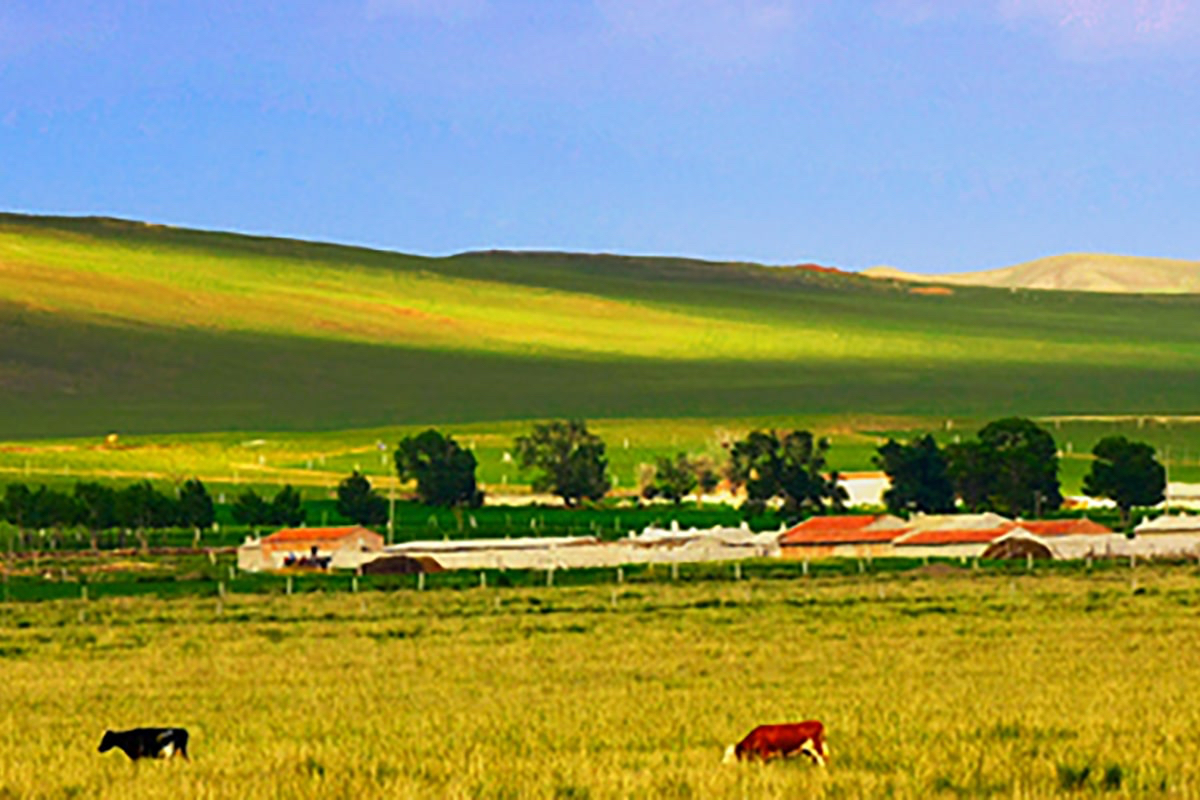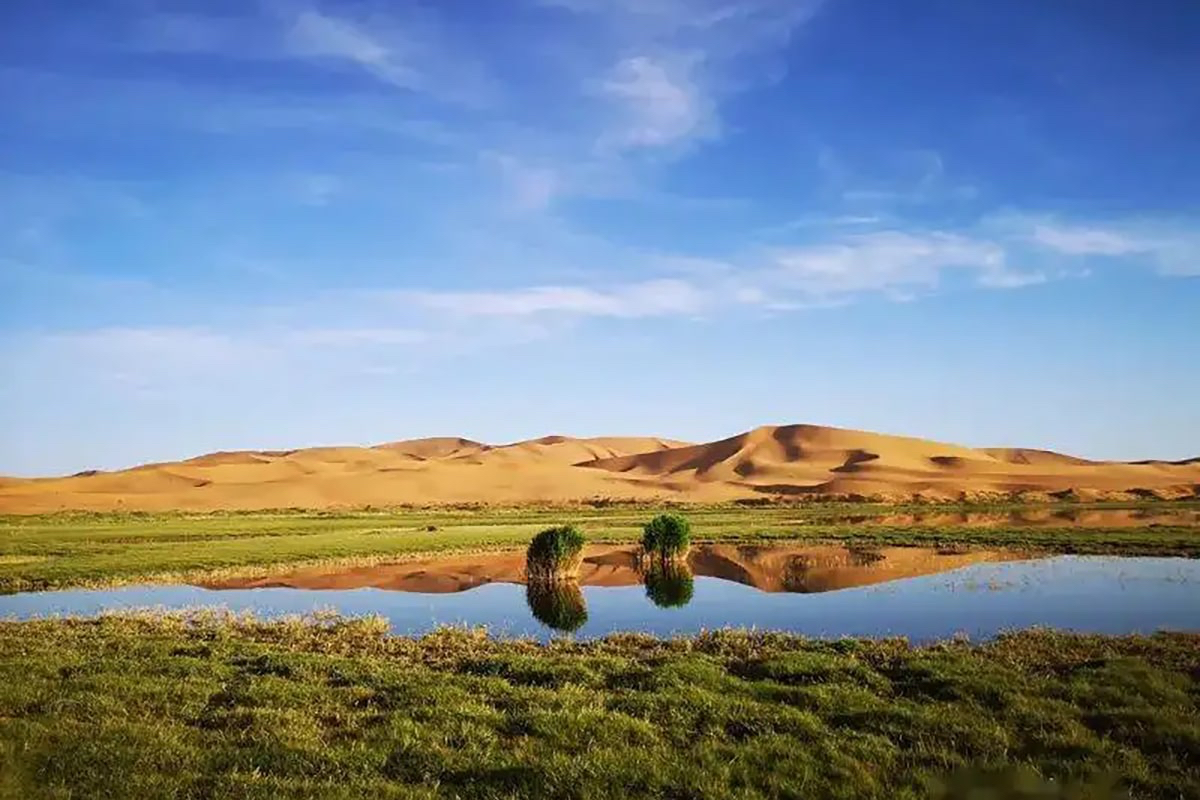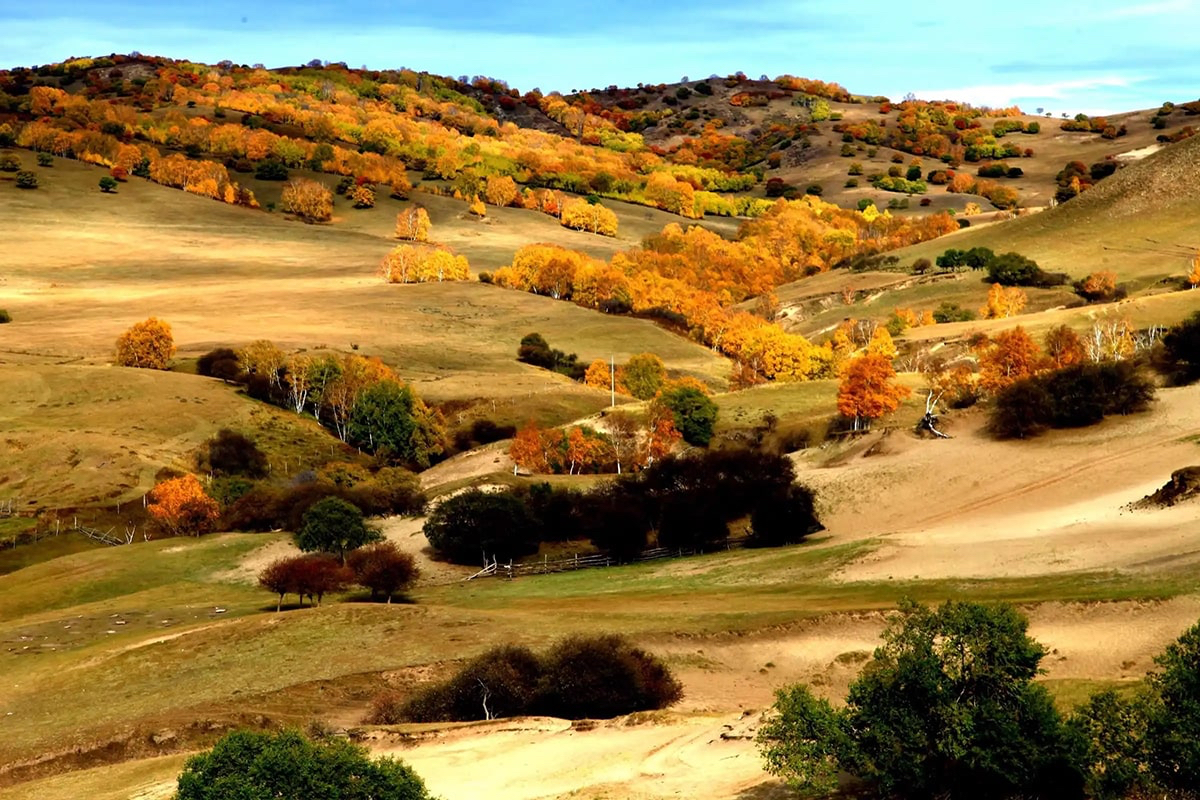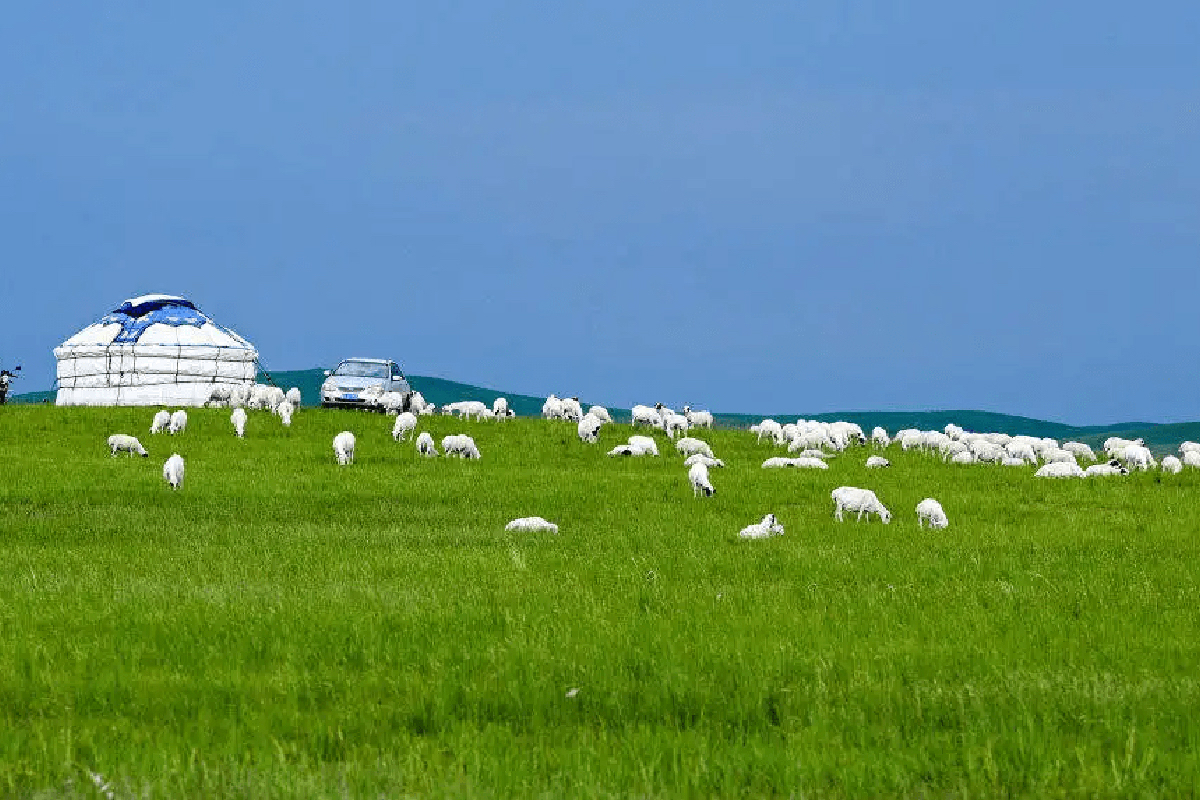Inner Mongolia Travel Guide
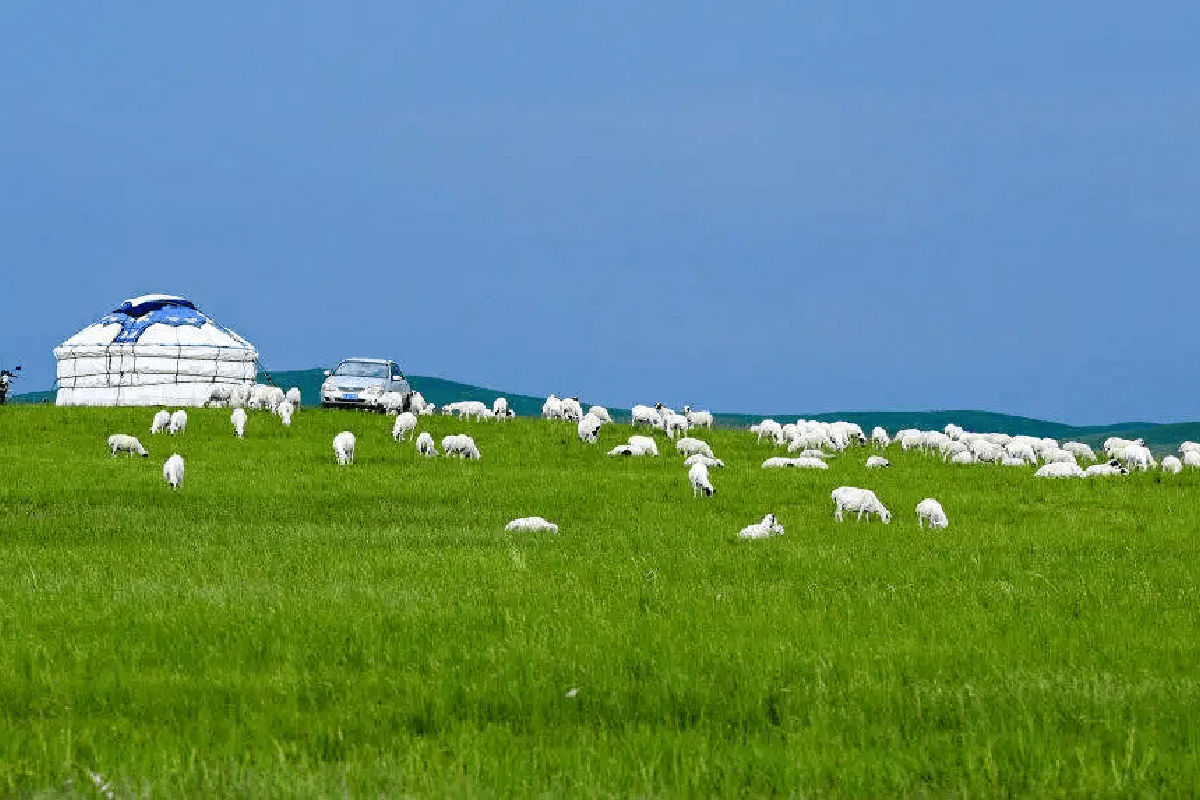
Inner Mongolia, referred to Chinese as nei meng gu, is an administrative body which covers a large chunk of land in northern China. Size-wise, it is the third largest provincial level administrative body in China. It covers an area of almost 120 square kilometers; taking up 12.3% of total land mass of China. Put things into perspective, Inner Mongolia alone is larger than the land mass of France, UK and Germany combined. It is a land of dazzling ethnic culture and unparallel landscapes, a popular and exotic tourist destination for Chinese and foreigners. Inner Mongolia borders, from east to west, the province of Heilongjiang, Jilin, Liaoning, Hebei, Shanxi, Shannxi, Ningxia Hui Autonomous Region and Gansu. It stretches further north to border Russia and Republic of Mongolia (known by Chinese as Outer Mongolia, as opposed to Inner Mongolia).
Administrative-wise, Inner Mongolia is divided into 12 prefecture-level divisions. Until the late 1990s, most of Inner Mongolia's prefectural regions were known as Leagues (referred to Chinese as meng), a term inherited from Mongol divisions of the Qing Dynasty, quite a departure from common terms such as county and city which are wildly used in rest of China.. Similarly, county-level divisions are often known as Banners (as qi in Mandarin Chinese). Since the 1990s, numerous Leagues have converted into prefecture-level cities, while many Banners remained. The reshuffle and restructure of Leagues and Banners led to the change of names in some region, but most of the administrative bodies maintained their original names which are rooted with rich Mongol heritage, such as Hohhot, Hulun Buir, Bayannur, and Ulanqab. Some adopted new names which are more familiar to Han Chinese, such as Chifeng and Tongliao.
Inner Mongolia is a sparsely populated part of China. Its huge territory is home to about 24 million people, mostly of Mongol and Han ethnic background. The Han people of Inner Mongolia speak a variety of Mandarin dialects, depending on the region while Mongols in Inner Mongolia speak a variety of dialects of the Mongolian language family.
This piece of land has a long and proud history. As early as the Old Stone Age, humans had inhabited the area of present-day Inner Mongolia. A number of historical sources has borne out this claim.
● What to do & where to go
The Mausoleum of Genghis Khan
The true burial site of Genghis Khan, who was buried in a secret, unmarked tomb according to his will, and all personnel involved in the construction and burial having been killed thereafter, remains a mystery to this day. The present mausoleum was built in 1954 as a respect to this great Mongol leader. Among the long history of Mongol tribes, the most well known and exciting part was that of Genghis Khan. It was first during the Song (CE 960-1279) Dynasty that a large Mongol tribe appeared in the area. Earlier, i.e., from the Tang (CE 618-907) Dynasty down to the arrival of Genghis Khan and his Mongol hordes, the territory called Inner Mongolia was inhabited primarily by Turkic tribes. With the rise of the Yuan (CE 1279-1368) Dynasty, the area came under strong central government rule, which in fact was Mongolian rule (the first emperor of the Yuan Dynasty), it will be remembered, was Kublai Khan, the grandson of Genghis Khan – one who fought campaigns all across Asia and into Europe, having established the largest contiguous empire in the world by the time of his death.
Badain Jaran desert
Covering a total area of 47,000 square kilometers, Badain Jaran Desert is the third largest desert in China, and the forth largest in the world. It is located in the south-central part of Inner Mongolia Autonomous Region and the North of the Hexi corridor in Gansu. With picturesque lakes and singing sand dunes, it is a hot-spot and an ideal place for exploration.
The Great Wall of Qin
A section of the Great Wall of Qin Dynasty (221 to 206 BC) stretches for 100 kilometers through the territory of Baotou (bāo tóu 包头), and the wall in Guyang County , 10 metres high, presents a magnificent sight. A section located in Shiguai district is the oldest existing part of the Great Wall.
The Great Mosque
The Great Mosque of Hohhot(qīng zhēn dà sì), located in the older southwestern part of Hohhot, was built during the reign of Emperor Kangxi of the Qing Dynasty (1644-1911 AD) after throngs of the Hui Muslim Minority migrated from Xinjiang to Mongolia. The Great Mosque is the earliest and largest mosque among those eight mosques in Hohhot, the capital city Inner Mongolia Autonomous Region. Great Mosque was built in 1693; renovated in 1789 and 1923. It now covers an area of 4000 square meters.
● What to eat
Grill Whole-lamb
Grill Whole-lamb is a kind of traditional Mongolian food. It is often prepared for special events, such as when a dinner party is held in honor of the distinguished guests or a great celebration is held. The lamb, roasted as whole, looks golden red and tastes quite delicious, is laid on a square wooden dish.
Instant-Boiled Mutton (mutton hotpot)
Instant-boiled mutton, also referred to as the Mongolian hot pot, has its origin in the Yuan Dynasty. Dinners put thin slice mutton rolls into a boiling pot with their chopsticks. The mutton is cooked very quickly, often within seconds. Take it out and put it in a dipping sauce, often sesame sauce with various flavoring, the tender mutton melt in mouth.
Hand-pull Mutton
Meat, particularly mutton and beef, are staple among nomadic tribes in northern China. One big feature of Mongol culinary culture is the generous amount of meat on table. Mutton is cooked to full tender. You just use hands to pull away the mutton and dip with salt or other flavoring. This simple way of cooking is suitable for nomadic life style of Mongols.
● Climate
Weather patterns vary drastically in this region due to its large landmass. In general Inner Mongolia is in a continental monsoon climate. Visitors would expect a cold, long winter with frequent blizzards and a relatively short and warm summer. A greater part of Inner Mongolia is arid, semi-arid and some of them present a typical desert weather pattern.
● Access
Land locked Inner Mongolia is the northern getaway of China. It is an important border region with booming trades going on with Russia and Republic of Mongolia. Like most part of China, Inner Mongilia enjoys a sophisticated highway and high speed railway networks connecting most of its Leagues, Banners and townships. There are also land transportation linking Inner Mongolia with Russia and Republic of Mongolia.
For air travel, major international hubs in this region are Hohot Baita International Airport (HET), Ordos Ejin Horo International Airport (DSN) and Manzhouli Xijiao International Airport. There are also regional airports providing services to regional cities and towns and other domestic destinations.
- HOTEST
- RECOMMEND
